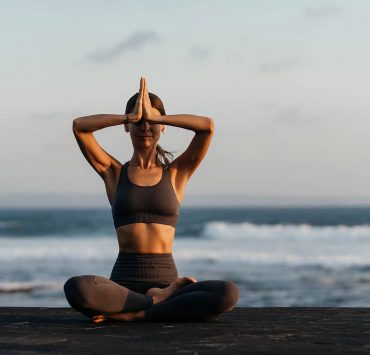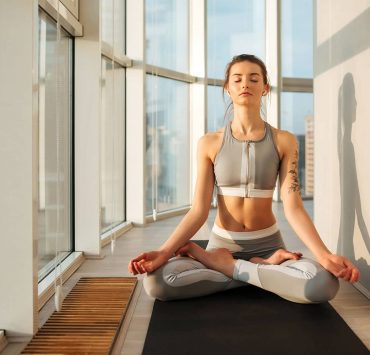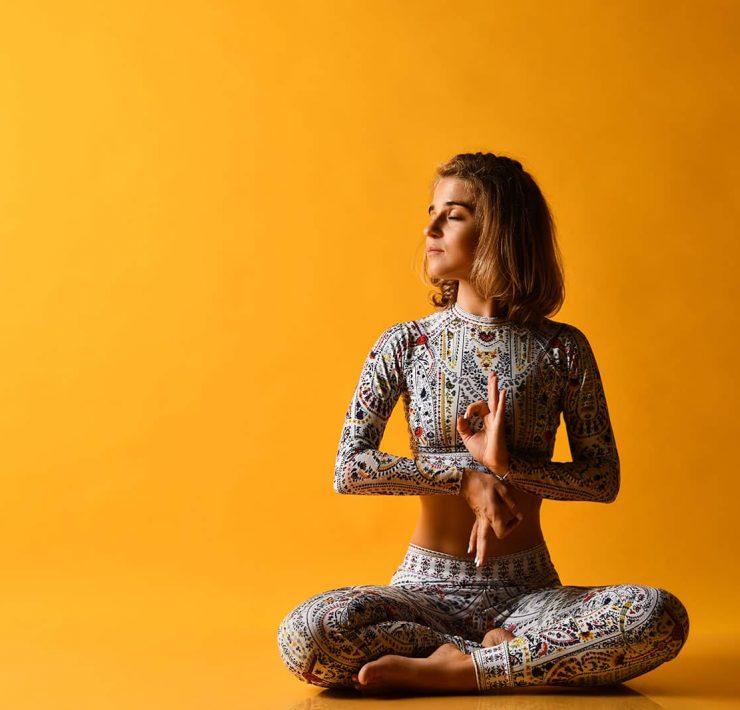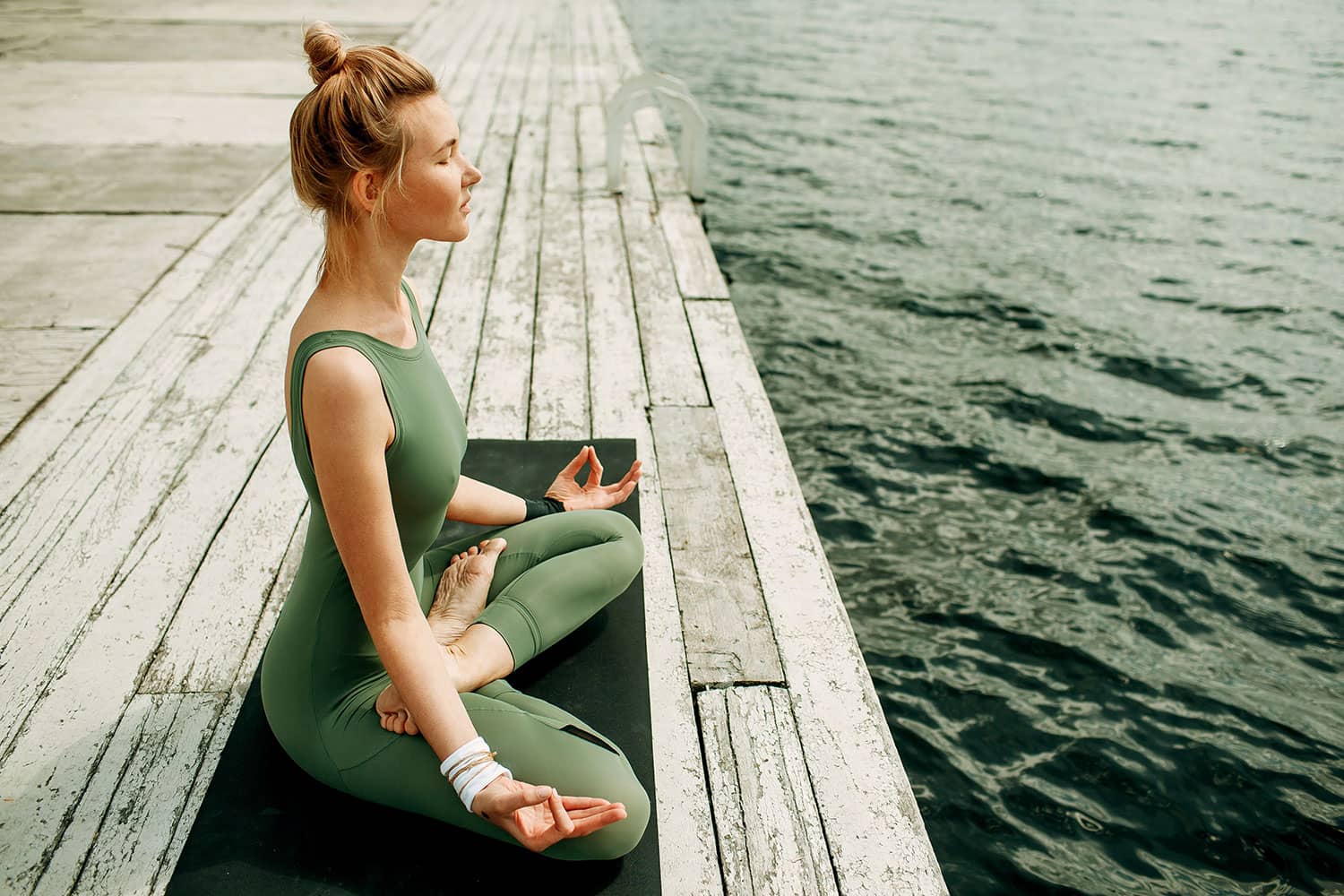
Former nutrition specialist Alexandra Mackenzie knows what it means to…
Meditation can seem daunting. Sitting for hours with a blank mind seems impossible, right? How would you know where to start? Or even if you’re doing it right?
But as with any exercise, (real talk: meditation is exercise for your brain!), it takes practice, time and commitment.
So let’s talk about exactly what meditation is. Spoiler: it’s not as scary as it seems! There are 7 types of meditation (each explained), what meditation does to different parts of your brain and it’s vast benefits.
We will cover what factors to consider when choosing a pose, 5 poses to choose from and a 7 point checklist once selected.
Let’s get to work!
What is Meditation?
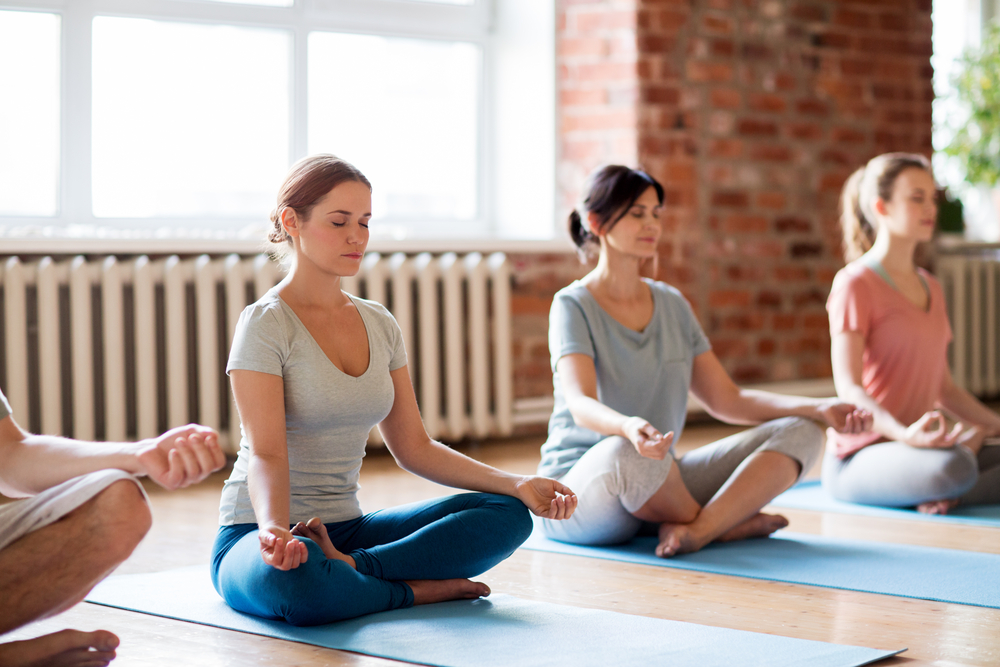
Meditation isn’t about sitting on the ground chanting Om. It’s about learning a set of techniques to encourage a heightened state of awareness and focus your attention. It has numerous benefits for your psychological well-being.
Headspace is a popular phone app whose goal is to make meditation accessible to everyone. They define meditation as “It’s about training in awareness and getting a healthy sense of perspective. You’re not trying to turn off your thoughts or feelings. You’re learning to observe them without judgment. And eventually, you may start to better understand them as well”.
Note that Headspace focuses on mindfulness meditation, defined below.
Types of Meditation
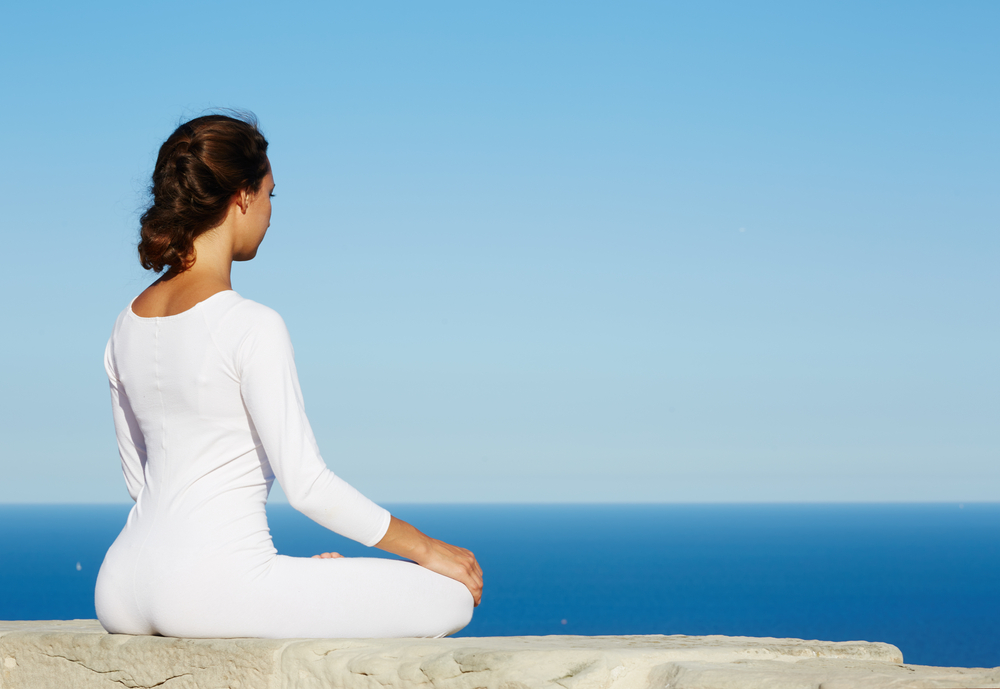
Most types of meditation that you find can fit into one (or more!) of these 7 categories.
Loving-Kindness or Metta Meditation
The goal of Loving-Kindness or Metta Meditation is basically exactly as it sounds. You cultivate an attitude of loving and of kindness towards everything and everyone. Even your enemies! You also identify your stressors and send these good vibes too.
Body Scan/Progressive Relaxation
Body Scan or Progressive Relaxation encourages you to scan your body to identify areas of tension. Once found, the goal is to focus and allow it to release from your body. Ultimately, you’ll end up free of tension and relaxed.
Mindfulness
Mindfulness Meditation teaches you to be present in the current moment and remain aware of what’s going on in your body. You are not to dwell on the past but also, to not dread the future. Stay in the present moment, the right now. This meditation also encourages an awareness of your surroundings. You will do all of this with a lack of judgment.
Breath Awareness
Breath Awareness Meditation is also basically exactly what it sounds like! You’ll turn all of your attention to your breath, inhaling and exhaling slowly. You have the option to count your breaths, typically done on your exhales. The goal is to only focus on your breathing. Any other thoughts that enter your mind are ignored.
Kundalini Yoga
Kundalini Yoga is a movement-based meditation with a focus on deep breaths and mantras. The purpose of this type is to improve your physical strength, reduce pain, anxiety, and depression.
Zen or Zazen
Zen or Zazen Meditation is similar to mindfulness meditation in that you find a comfortable seat, focus on your breathing, and observe your thoughts. Again, with no judgment. The difference is that this type involves specific steps and postures and can be part of a Buddhist practice.
Transcendental
Transcendental Meditation is very spiritual. You’ll remain seated while breathing slowly. The purpose or goal is to rise above your current state of being, to transcend if you will.
The Science of Meditation
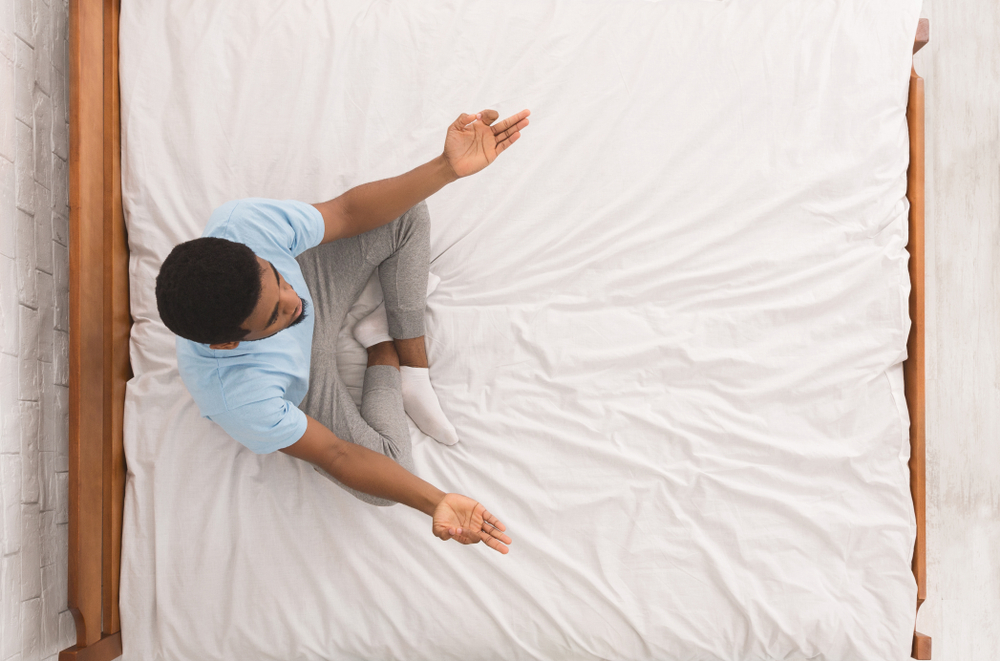
Meditation has been proven to literally change your brain!
Scientists used an fMRI scan to see how exactly meditation can affect different parts of your brain. They learned that meditation creates a decrease in beta waves which means your brain stops processing information as actively as it normally does.
In layman’s terms, turning it off and turning it back on. A bit dramatic. But jokes aside, your brain is constantly moving throughout the day. Giving it a break only seems natural.
In your Frontal Lobe, the part of your brain that reasons, plans, emotes and is self-consciously aware, goes offline. In your Parietal Lobe, the part of your brain that processes sensory information about your surroundings, slows down. Your Thalamus, the part of your brain that focuses your attention, slows the incoming information to a trickle. Lastly, your Reticular Formation, which receives incoming stimuli, dials back the arousal signal during meditation.
As you can see, meditation actually slows everything down in your brain.
So what are the benefits of giving your brain a “break”?
Benefits of Meditation
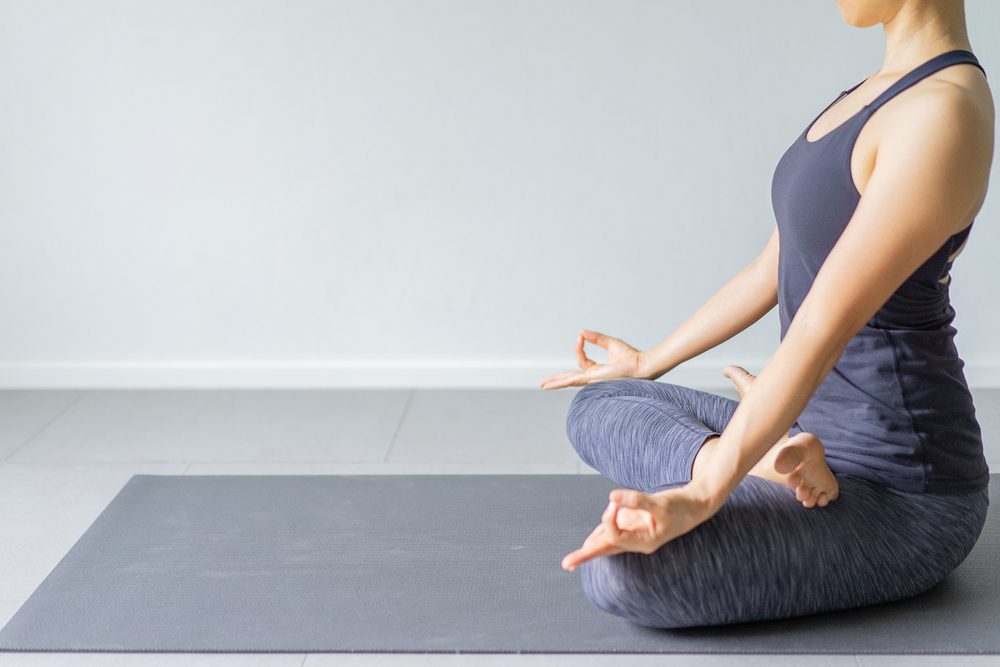
The benefits of meditating are innumerable.
You gain a new perspective in stressful situations. You build skills to manage your stress. You become more self-aware and focus on the present. You reduce negative emotions. You can increase your imagination, creativity, patience and tolerance.
The Mayo Clinic takes it even further and claims meditation can help you manage symptoms of anxiety, asthma, cancer, chronic pain, depression, heart disease, high blood pressure, irritable bowel syndrome, sleep problems, and tension headaches.
But it doesn’t stop there! Meditation promotes emotional health, lengthens your attention span and could possibly reduce age-related memory less. It can generate kindness, not just to others but to yourself. It may help fight addictions and is accessible virtually anywhere!
So how do you decide your best pose?
Factors for Pose Selection
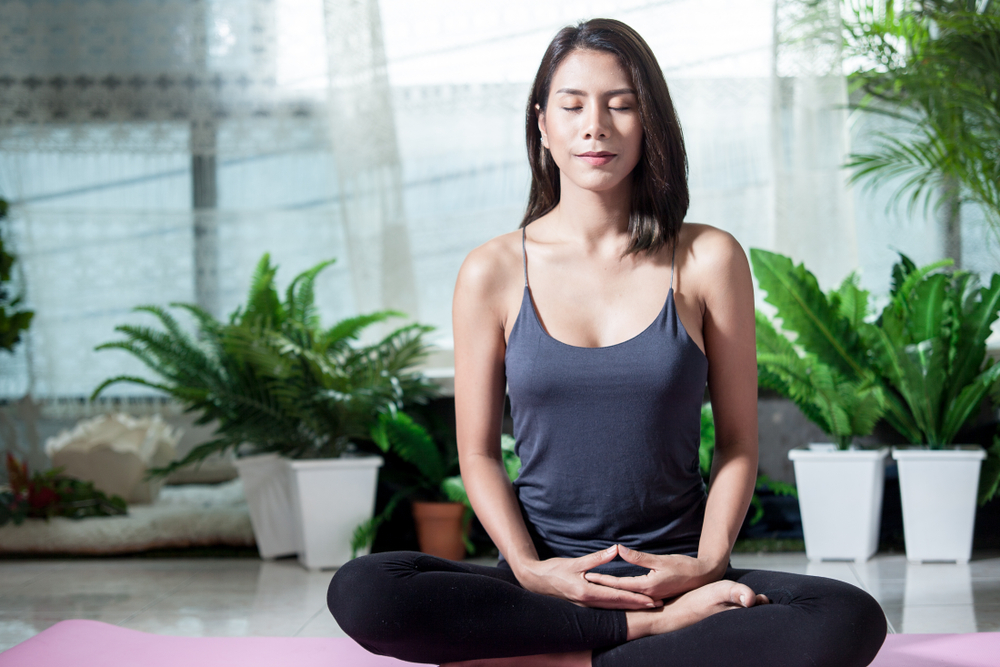
When choosing which pose is best for you, remember these 4 factors.
- Comfort. You want to feel comfortable in the pose you choose. Physical pain can be a distraction. You want to focus inward, not outward.
- Stillness. You need to feel stable and balanced. You can test this by gently rocking your body front to back and side to side. Do this until you’ve found the perfect spot.
- Relaxation. Meditation is supposed to release tension. Scan your body for any part that isn’t relaxed and adjust accordingly.
- Alignment. Check your spine. It should be stacked, shoulders over hips, not leaning in any direction.
5 Meditation Poses
Sukhasana — Easy Seat Pose
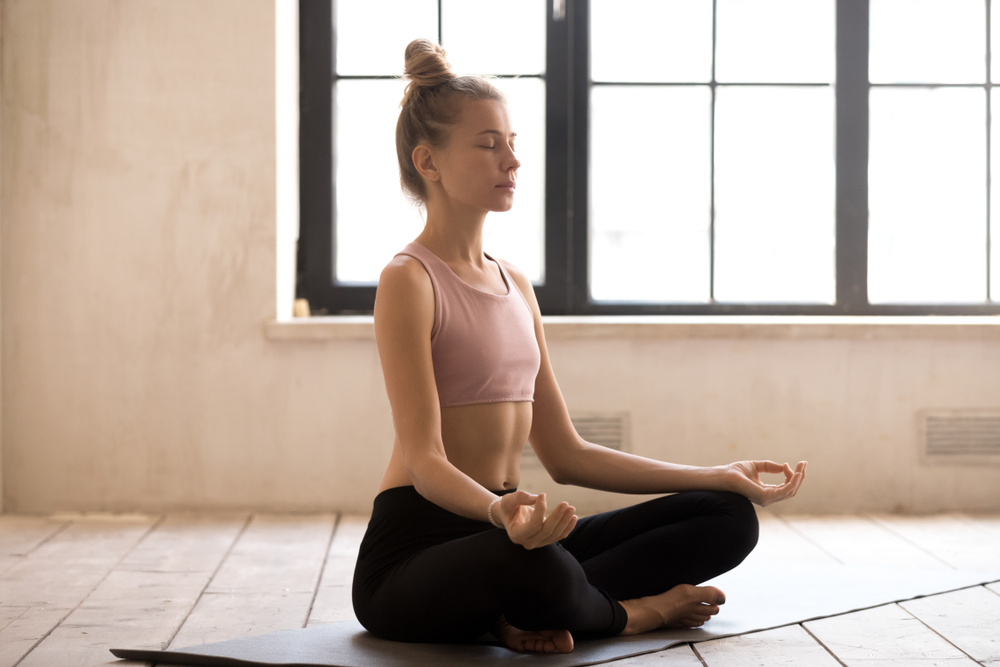
Start seated on your mat with your sit bones firmly on the ground. Cross one shin over the other coming into a cross-legged position. Both feet are underneath the opposite knees. If you favor one leg on top, occasionally switch so you’re spending an even amount of time on both.
Anatomical Checkpoints
- Your shoulders are stacked directly over your hips.
- Move your shoulders away from your ears by sliding your scapula, your shoulder blades, down your back.
- The top of your head rises toward the ceiling.
Props
If your feet have a tendency to fall asleep (or you just want to sit more comfortably!) you can add props underneath your seat. You’ll want to get your hips higher than your feet. This can be a blanket, bolster, meditation pillow or block(s).
Padmasana — Lotus Pose
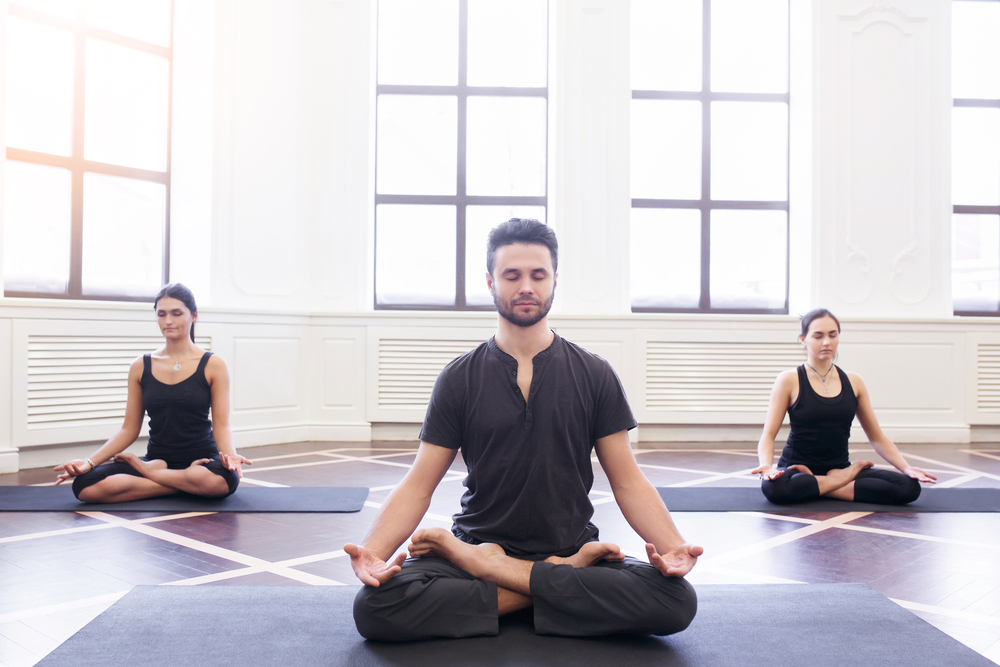
There are 3 levels of Lotus Pose, each one progressively more difficult than the last. Master each variation before moving onto the next.
Also, be sure to prep your hips prior to practice with hip-openers.
Quarter Lotus: Quarter Lotus is very similar to Sukhasana – Easy Seat. The difference is that instead of tucking both feet under you, one foot will rest on the opposite calf.
Start in a seated position and cross your legs. Your left foot stays on the floor beneath your right thigh. Cross your right foot over to rest on top of your left calf.
Conversely, your right foot stays on the floor beneath your left thigh as you cross your left foot to rest on the top of your right calf.
Half Lotus: Start seated on the mat with your legs in front of you. Bend your right knee and hug it into your chest. Then, take the right ankle to the crease of your left hip with the sole of your right foot facing towards the sky. The top of your foot should be resting in your left hip crease. Bend your left knee, crossing your left ankle under your right knee.
When practicing on the opposite side, bend your left knee, hugging it into your chest. Take your left ankle to the crease of your right hip, the sole of our left foot facing the ceiling. Bend the right knee, crossing your right ankle under your left knee.
Full Lotus: Sit on your mat with both legs extended in front of you. Bend your right knee, hugging it into your chest. Like the half lotus, bring the right ankle to the crease of your left hip, sole facing the ceiling. Then, bending at the left knee, cross your left ankle over the right shin and into the hip crease. The sole of this foot should be facing the ceiling as well. Draw your knees close together as you sit up straight.
If you prefer the opposite setup, again start on the mat with your legs extended. Bend your left knee, hugging it into your chest. Take a half lotus, bringing the left ankle into the crease of the right hip. Bend the right knee, crossing your right ankle over your left shin and into the hip crease. The soles of both feet should be facing the sky. Draw your knees toward each other as you sit up straight.
Anatomical Checkpoints:
- Stack your shoulders over your hips, hands resting comfortably.
- The top shin is externally rotated.
- Soles of the feet are facing the sky.
Work your way up to full lotus, first mastering the quarter and half.
Props:
Like Sukasana, you can raise your hips above your feet by sitting on a prop of your choice. You can also place a folded blanket under your knees if they do not reach the floor for additional support.
Virasana — Hero Pose
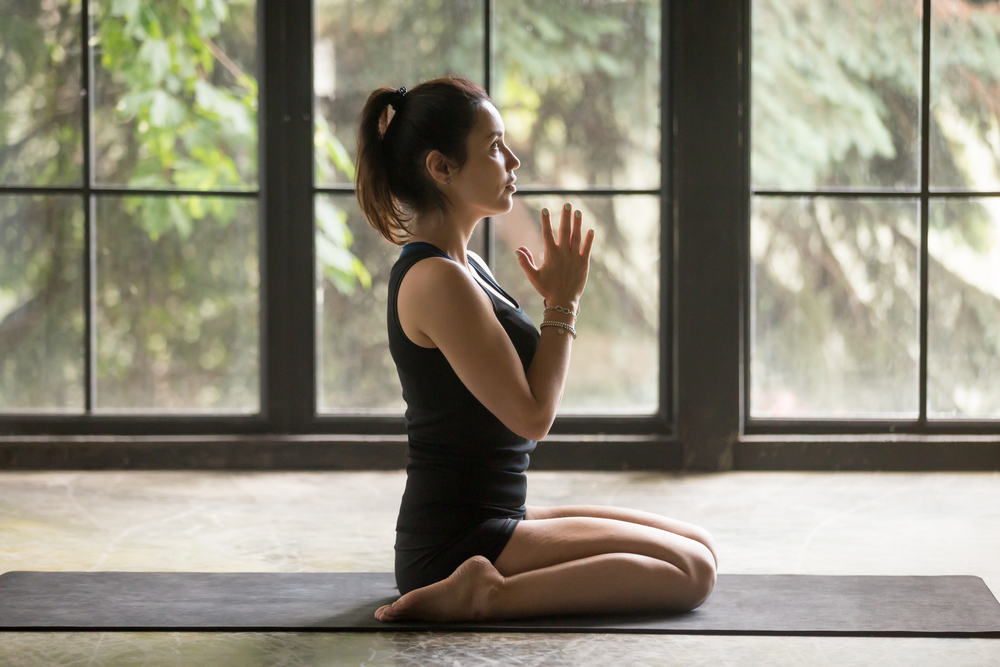
You can take your meditation in a kneeling pose, called Virasana or Hero Pose. This is a great pose if you want to give your hips a break or stretch through your quad muscles!
Start by kneeling your mat. Keep your knees together, bend at 90 degree angles. Separate your feet wider than your hips. Lean forward as you slightly bend at the knees, reaching your hands back to your calf muscles. Roll these muscles out to the side as you sink your seat to the floor between your calves. Rest your hands on your quads.
Anatomical Checkpoints:
- Keep your toes pointed and spread keeping the tops of your feet firmly on the mat.
- Your calves should be touching your outer thighs.
- Spine stays straight.
Props
If this pose is painful on your knees or tops of your feet, use a blanket underneath. You also have the option of placing a yoga block on its lowest height between your ankle bones to bring your hips over your feet and release possible tension in the knees.
Tadasana — Mountain Pose
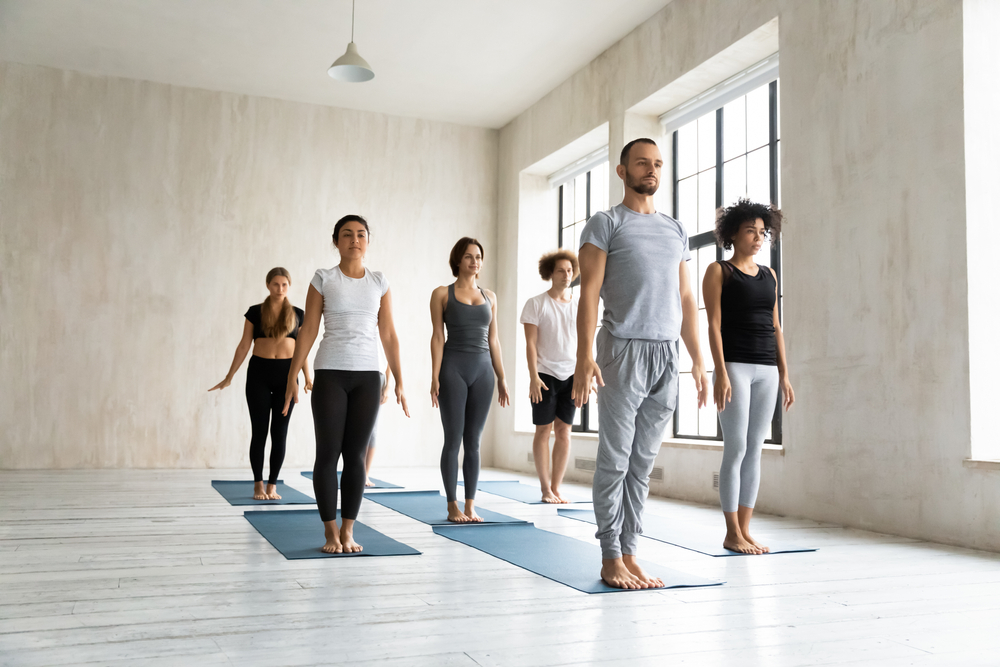
To take your meditation off the ground, try standing in Tadasana – Mountain Pose. To get the most out of this pose, pay close attention to the anatomical checkpoints.
Start standing with your big toe mounds touching. Pick up all of your toes and spread them wide before placing them back down. Pull your quads upward, making your kneecaps rise. Internally rotate both thighs. Draw your belly in and widen through your shoulder blades. Shrug your shoulders up and let them roll back as you release. Arms hang naturally by your sides with your palms facing forward.
Anatomical Checkpoints:
- If your ankles touching is uncomfortable, slightly separate your heels.
- Root your calves and feet into the floor.
- Maintain the natural curve of your spine.
- Make sure your shoulders are stacked over your hips.
- Keep your neck long and chin neutral.
Props – N/A
Savasana — Corpse Pose

You’re probably familiar with Savasana already, it’s the pose you take at the end of most yoga classes. Corpse Pose is a great resting pose for meditation or yoga nidra.
Start by laying on your back. Separate your legs to approximately hips-width distance and let your feet fall to either side. Keep your arms along your sides. Palms face toward the ceiling, let your fingers curl.
Anatomical Checkpoints:
- Make sure your arms are separated from your torso.
- Let you head rest on the mat, releasing any tension from the neck.
- Your shoulders and seat rest firmly on the mat.
Props
You have many options for props in this pose depending on what your body is craving. You can roll a blanket and place it under your neck for cervical spine support. You can also take a block or bolster under your knees to release any tension in your lower back. Place a blanket or pillow under your head.
If you’re going to be here for a while and/or have a tendency to get chilly, place a blanket over your body for warmth.
7 Point Check
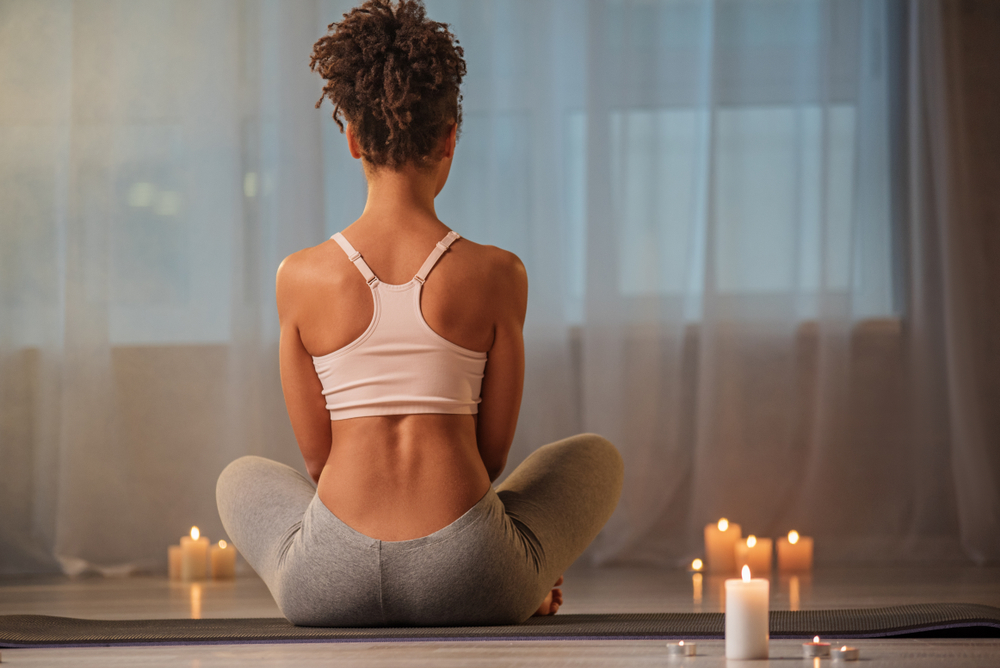
Once you’ve chosen your position, move through this 7 point check for an optimal experience!
- Find your comfortable position, either seated, standing or laying.
- Sit upright, if applicable. Your spine should be straight but not overextended. Don’t slouch.
- Place your hands on your knees, by your sides or even in your lap. Try not to move them throughout your practice.
- Relax your shoulders.
- Slightly tuck your chin about 20 degrees to allow your next to stay relaxed.
- Release your jaw. If you’re unsure, move it around a bit to find and release tension.
- Choose your gaze. You can either close your eyes or keep a soft gaze 3 to 5 feet in front of you.
Get to it!
Meditation is a technique that encourages awareness and slows down the parts of your brain, giving it a “break”. The benefits of this practice are numerous and very important.
There are 7 types of meditation for you to explore, try each one and see what fits best for you! Also try each of the 5 poses listed to figure out which one you prefer. While not covered above, note that you can also meditate while sitting in a chair, follow the 7 point checklist just the same.
Once you’ve selected the proper pose for you, mentally run through the 7 points.
Happy meditating!
What's Your Reaction?
Former nutrition specialist Alexandra Mackenzie knows what it means to support the body and mind through food. She’s passionate about sharing her wealth of knowledge with anyone willing to listen.






